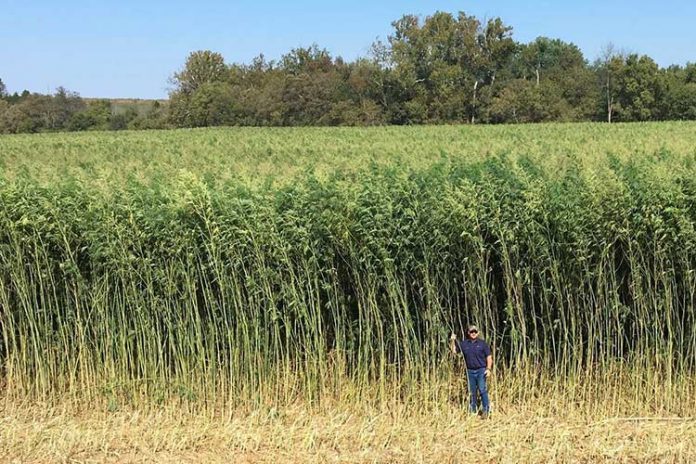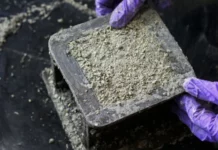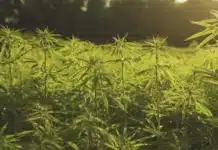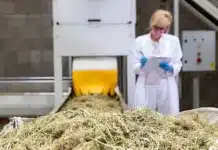Kentucky’s agriculture commissioner is forecasting record numbers of hemp growers and processors in 2018 as supporters of the experimental crop look to strengthen its foothold.
The state agriculture department said Tuesday it has approved 225 applications from growers to produce up to 12,018 acres (4,863 hectares) of hemp for research purposes this year.
“Industrial hemp in 2018 will be the biggest year yet, with the most growers and the most processors and we think the most acres,” Agriculture Commissioner Ryan Quarles said.
Last year, 209 growers were approved to plant up to 12,800 acres (5,179 hectares) in Kentucky. The 2017 approved acreage total was skewed because one prospective grower didn’t follow through on intentions to plant several thousand acres of hemp, agriculture officials said.
Kentucky has been at the forefront of efforts to test hemp’s viability as a cash crop. It is prized for its oils, seeds and fiber.
Growing hemp without a federal permit has long been banned due to its classification as a controlled substance related to marijuana. Hemp and marijuana are the same species, but hemp has a negligible amount of THC, the psychoactive compound that gives marijuana users a high.
Hemp got a limited reprieve with the 2014 federal Farm Bill, which allows state agriculture departments to designate hemp projects for research and development.
Last year, Kentucky’s farmers planted more than 3,200 acres (1,294 hectares) of hemp, up from 2,350 acres (951 hectares) in 2016 and 922 acres (373 hectares) in 2015. Experimental projects began in Kentucky with 33 acres (13 hectares) in 2014.
Multiple reasons could account for the gap between approved and actual hemp acres planted, including seed availability and struggles with weed control, agriculture officials said.
Hemp’s long-term prospects hinge on cultivating a strong network of processors who turn the highly versatile crop into products, Quarles said. Kentucky now has 57 registered hemp processors, up more than 20 percent from last year, he said.
A University of Kentucky agricultural economist said the crop’s political and regulatory uncertainty, plus its spread across the country, means there shouldn’t be an oversupply.
“Ultimately, profit incentives and longer term certainty will influence farmers’ future interest in this crop,” economist Will Snell said Tuesday.
So far, 34 states have authorized hemp research, while actual production occurred in 19 states last year, with production totaling 24,841 acres (10,052 hectares), more than double the 2016 output, said Eric Steenstra, president of the advocacy group Vote Hemp.
Regulatory uncertainties are impeding bigger investments in the fledgling industry, he said.
“I think larger investors in terms of processing and building this industry are probably sitting on the sidelines until this thing becomes more clearly a commercial crop that moves from this pilot program status,” Steenstra said.
The crop, which once thrived in Kentucky, was historically used for rope but has many other uses, including clothing and mulch from the fiber, hemp milk and cooking oil from the seeds, and soap and lotions. Other uses include building materials, animal bedding and biofuels.














